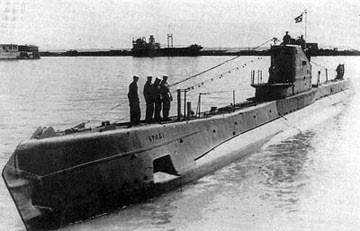Localizan dos submarinos soviéticos
hundidos
SCH-320
Ambos submarinos fueron localizados
en el Golfo de Finlandia muy próximos el uno del otro en mayo de 2017. La expedición
corrió a cargo de un grupo especializado en este tipo de misiones con el nombre
de “Reverencia ante los buques de la Gran Victoria”. El primer submarino
localizado fue el SCH-320, de la clase Shuka
con 38 hombres como tripulación, a unos dos kilómetros de la isla de Bolshói
Tiuters. Este submarino zarpó de su base en Kronstadt en octubre de 1942 bajo
el mando del capitán Iván Vishnevski. Con el asedio alemán de Leningrado
también se intentó bloquear a la flota del Báltico en sus propias bases. Para lograrlo
los alemanes tendieron un tupido campo de minas junto con una malla metálica
fijada al fondo marino para evitar la salida al mar de los navíos rusos. Entre las
islas de Gogland y Bolshói Tiuters se tendieron 6.000 minas marinas junto a la
malla metálica (Seeigel o Erizo de
mar). El SCH-320 trató de salvar el obstáculo el 27 de octubre pero chocó con
una de esas minas provocando su hundimiento de inmediato llevándose a toda su
tripulación junto a él.
El otro submarino localizado es
el SCH-406 que pertenecía a la Flota del Norte. En el verano de 1942 fue capaz
de salir del bloqueo alemán y hundir cinco mercantes alemanes en el mar de
Aland. Fue allí donde recibió hasta tres ataques con cargas de profundidad pero
logró salir indemne. En octubre de ese mismo año logró penetrar en el Golfo de
Danzing torpedeando a tres mercantes alemanes y capturando a 7 náufragos como
prisioneros antes de volver a su base. El 26 mayo de 1943 bajo el mando del
capitán Yevgueni Osipov trató de salir de nuevo a través del campo minado pero
terminó por chocar con una mina que le llevó al fondo del mar. Tras la
inspección preliminar se observó que los tubos lanzatorpedos estaban abiertos
lo que sugiere que algunos miembros de la tripulación pudieron intentar
abandonar el SCH-406
Fuentes:
Zvezdá
RT
English version
Both submarines were located in the Gulf of Finland very close to each
other in May 2017. The expedition was run by a group specialized in this type
of missions with the name of "Reverence to the ships of the Great
Victory." The
first submarine located was the SCH-320, of the Shuka class with 38 men as
crew, about two kilometers from the island of Bolshi Tiuters. This
submarine sailed from its base in Kronstadt in October of 1942 under the
command of the captain Ivan Vishnevski. With
the German siege of Leningrad it was also tried to block the Baltic fleet in
its own bases. To
achieve this, the Germans laid a dense minefield along with a metal mesh
attached to the seabed to prevent the Russian ships from sailing to sea. Between
the islands of Gogland and Bolshói Tiuters 6,000 marine mines were laid next to
the metallic mesh (Seeigel or sea urchin). The
SCH-320 tried to save the obstacle on October 27 but crashed into one of those
mines causing its sinking immediately taking all its crew with him.
The other submarine located is the SCH-406 that belonged to the North Fleet. In the summer of 1942 he was able to break out of the German blockade and sink five German merchants into the sea of Aland. It was there that it received up to three attacks with loads of depth but it managed to leave unscathed. In October of that same year it managed to penetrate in the Gulf of Danzing torpedoing to three German merchants and capturing to 7 castaways like prisoners before returning to its base. On May 26, 1943 under the command of Captain Yevgueni Osipov tried to leave again through the minefield but ended up colliding with a mine that took him to the bottom of the sea. After the preliminary inspection it was observed that the launcher tubes were open suggesting that some crew members might have attempted to abandon the SCH-406
Sources:
Zvezdá
RT

